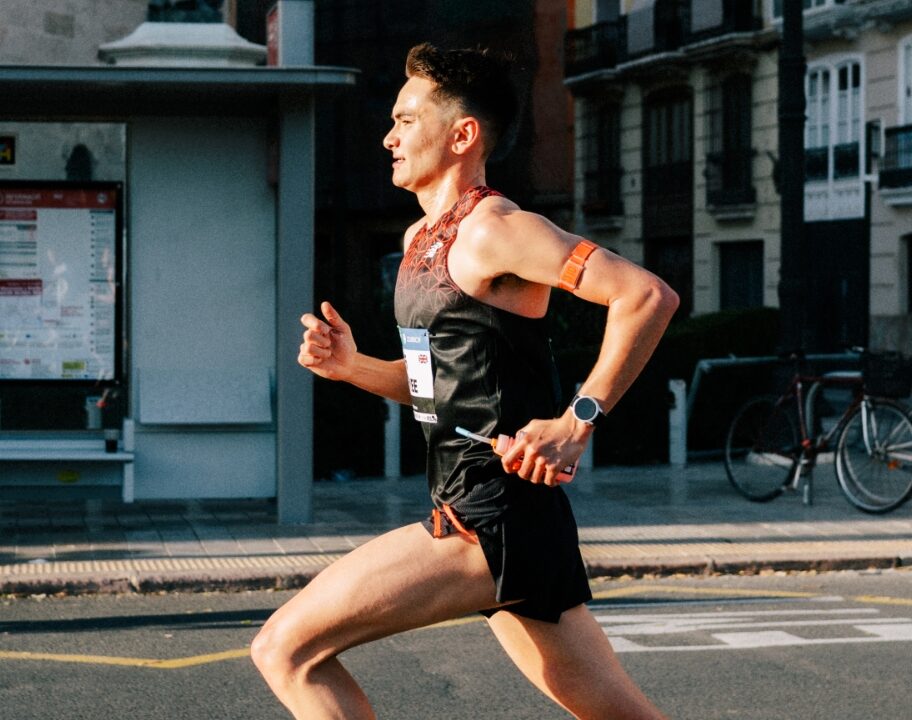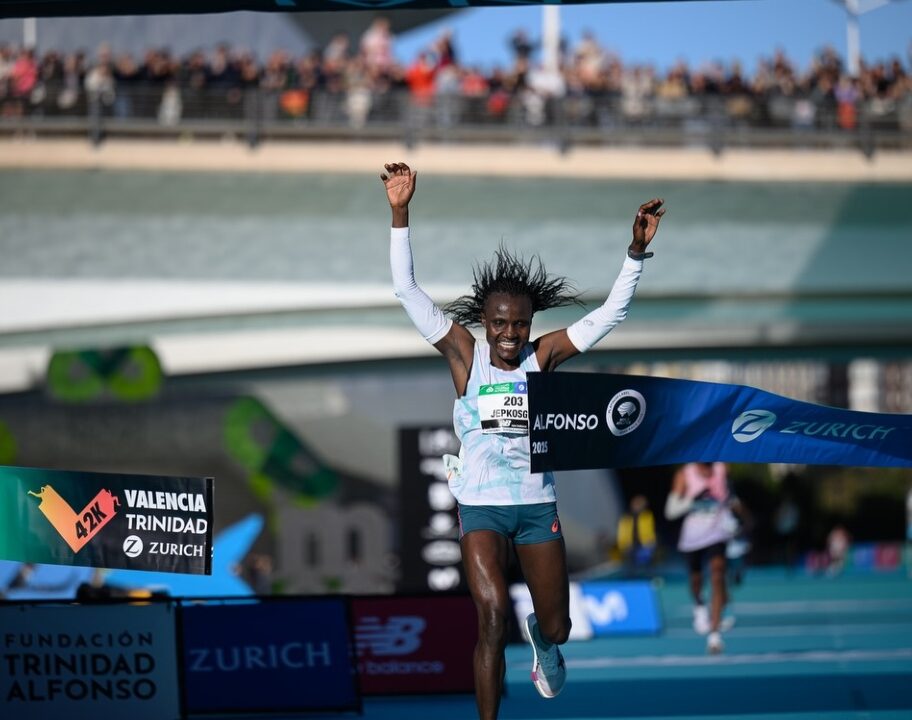Consistency is key to seeing progress in your running. But that consistency can be difficult to maintain if you’re struggling to recover from your weekly long run. Lingering fatigue and muscle soreness can lead to frustration at having to skip training sessions, or even injury if you keep trying to push through.
Recovery is just as important as your training sessions. What you do (or don’t do) after your weekly long run can have an impact on your ability to recover quickly enough, so you can keep making progress. We look at five ways to improve your running recovery.
Take the time to go through a mobility routine
The repetitive motion of running can create a lot of muscle stiffness. Left unchecked, that muscles stiffness can start to impede your form, and leave you feeling tight and fatigued. While it’s tempting to head straight to the couch after a long run – going through a quick stretching and mobility routine first can help to improve your recovery.
A quick post-run mobility routine will stretch out any tight spots and prevent muscle soreness from really settling in. Regular mobility work will help to improve your range of motion, flexibility and running efficiency. All of that will help you to perform better during your run sessions, and recover faster afterwards.
Optimise post-run nutrition
Fuelling is often something we focus on before and during our long run sessions. But your post-run nutrition is just as important. To improve your running recovery – you’ve got to fuel it. Nutrition plays a key role in ensuring that your body not only has adequate energy for your training sessions, but also enough energy to repair and to adapt to the training stimulus. So what should you be focusing on when it comes to your post-run food intake?
Carbohydrate is the body’s main source of fuel. It’s stored as glycogen in your muscles and your liver. When we run, we call upon this stored energy. Replenishing your glycogen by consuming sufficient quantities of carbohydrates before, during and after exercise is essential. Doing so gives your body the fuel it needs to implement the recovery process, and ensures your body has the energy it needs to perform again during your next training session.
Focus on starchy, complex carbohydrates (such as whole grains) around meal times, and consume simple carbohydrates that are absorbed rapidly around your training sessions.
Protein is synthesised by muscles to repair the damage sustained during exercise and to build new muscle fibres. Getting some protein on board after your run is only going to help boost the recovery process. However it’s important to note that the old adage of cramming in as much protein as possible, as quickly as possible after a training session is now disputed by many nutritionists. Instead, they suggest that focusing on a regular intake of good quality protein throughout the day is more effective. Think of that post-run protein intake as “topping up” rather than “cramming in”.
For optimal recovery, giving your body the fuel it needs to start the repair and adaptation process after training is important. In her book ‘More Fuel You’, sports dietician Renee McGregor states that recovery-focused nutrition should be taken within 20-30 minutes of training. That can be difficult if you’re fitting training in amid other commitments, so Renee suggests if that recovery window is falling outside of a meal time, a liquid form – such as a milkshake – can be useful. She states that combining carbohydrate and protein and giving your body fuel “in a form that is easy to digest means your muscles receive the building blocks they need to help them repair and recover quickly and efficiently before the next training session.”
Use contrast therapy (ice and heat) to enhance muscle repair
It’s not uncommon to see elite athletes jumping straight into an ice bath after a race or an intense training session. And even amateur runners and endurance athletes are starting to follow suit, as at-home ice bath pods grow in popularity.
Subjecting the muscles to ice after exercise is said to reduce swelling and inflammation. But research has shown that using ice and heat in tandem can actually be a better recovery method. A study by Dupuy et al in 2018 showed that using heat immediately after icing significantly reduced muscle soreness and perceived fatigue after high intensity exercise.
Known as Contrast Therapy – using heat after ice is said to promote blood flow and limit the loss of muscle strength and power in the days after a tough training session. This can be a useful intervention to boost your recovery in the day or so immediately following a race or a workout.
Get regular sports massage
Sports massage can be an incredibly useful tool to help speed up your recovery – but it can also be a preventative measure to help you avoid injury. A good sports massage therapist will take the time to conduct a postural analysis and some range of movement testing with you, prior to treatment. Through this assessment, they’ll be able to identify any potential weaknesses or tight areas that are creating muscular imbalances and work with you to come up with an action plan – including the massage treatment itself, plus some targeted mobility work for you to do at home.
Sports massage soon after a race or hard session will help to stimulate blood flow, the removal of waste products and lymphatic drainage – reducing inflammation and helping your body to repair the exercise-induced muscle damage so it can adapt to the training stimulus. Meanwhile, through regular maintenance massage your sports therapist will be able to identify and treat any tight spots – known as adhesions – and in most cases, help to prevent these tight areas turning into issues that can disrupt your training. Regular massage can also help to stimulate the parasympathetic nervous system which in turn will promote better relaxation, reduced stress and improved sleep quality.
Prioritise sleep to improve running recovery
For amateur trail runners juggling training with work and family, sleep can often slip down the list of priorities. But getting good quality sleep is an essential part of allowing your body to recover and repair. During sleep, your body releases the hormones which take care of the repair and growth of muscle tissue. Inadequate sleep can impair this process, leading to lingering fatigue, muscle soreness and less adaptation to your training.
Try to avoid high intensity run sessions later in the day, as this can disrupt your body’s winding down process. If you struggle to get to sleep, look at reducing your caffeine intake and limiting screen time. No more late night Strava scrolling!
Use compression clothing to promote muscle repair
Recovery from your long run can actually start before you’ve even hit the ‘save’ button on your sports watch. Compression clothing such as tights or calf sleeves can be worn during your run to help to reduce muscle oscillation. Those muscle vibrations during exercise contribute to the damage to muscle fibres which leaves you feeling stiff and saw the day after your long run. Minimising them through the use of compression tights gives your body a head start, as there’s less damage to recover from.
Compression gear can also be used after your run to speed up your recovery. Sports compression brands offer specific recovery garments and compression sleeves designed to be worn for a few hours after your run.

“Recovery is about applying the correct amount of pressure to passive muscles. This is why the graduated compression levels we apply to the working muscles with our performance garments are different from our recovery garments. These muscles need the correct compression to help the flow of oxygen, which in turn, accelerates repair.”

Studies have shown that compression can be an effective tool to aid recovery. A study examining the impact of compression garments on recovery from eccentric exercise (in this instance downhill walking) published in the Journal of Sports Science and Medicine measured muscle metabolites – an indicator of muscular fatigue. It found that compression had an impact on the skeletal muscle repair process, allowing a faster cellular repair.
Compression is said to enhance blood flow by applying gentle pressure to the muscles. Improved blood flow means your body can clear built-up lactic acid faster and repair exercise-induced muscle damage more efficiently.
If you’re struggling to recover well after your long run sessions, wearing compression gear could be an easy win to speed up your recovery.
We often put more thought into actually doing our training, rather than how we can recover from it. But taking active steps to support your recovery, such as making use of compression garments and making sure you’re getting high quality nutrition on board, could make the world of difference. Train hard, recover harder and you might just unlock a new level of run performance.



![Russ Cook completes his epic run across the entire length of Africa [Photo credit: The Snapshot People Ltd]](https://run247.com/wp-content/uploads/2024/04/Russ-Cook-completes-length-of-Africa-run-2024-912x720.jpg)


